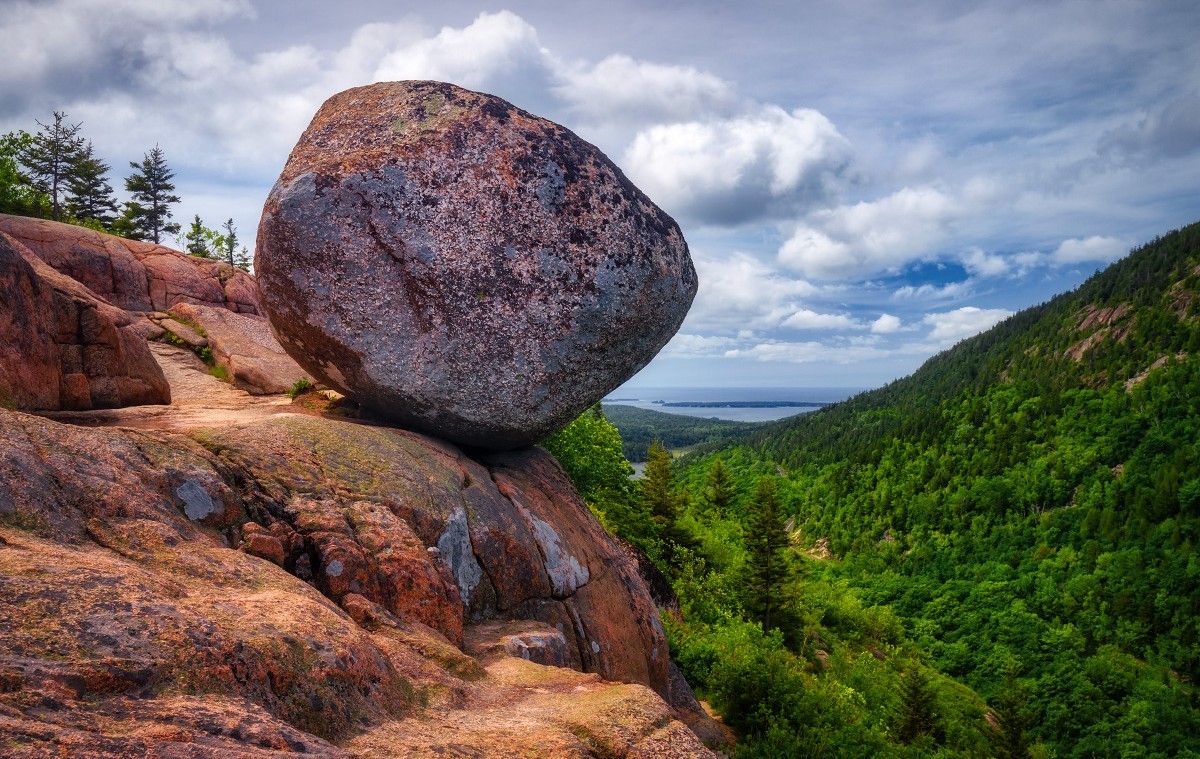Maine Bubble Rock Mystery

Have you ever wondered about the mystery of Bubble Rock in Maine? This giant boulder, perched precariously on the edge of a cliff in Acadia National Park, has puzzled visitors for years. How did this massive rock end up in such an unlikely spot? Scientists believe it was carried by glaciers during the last Ice Age, but the exact journey remains a topic of fascination. Whether you're a geology enthusiast or just love a good natural wonder, Bubble Rock offers a glimpse into the powerful forces that shaped our planet. Ready to learn more about this intriguing landmark? Let's dive in!
The Enigma of Bubble Rock
Bubble Rock, perched precariously on the edge of a cliff in Acadia National Park, has puzzled visitors for years. How did this massive boulder end up in such an unlikely spot? Let's unravel the mystery by exploring some fascinating places in Maine that might hold clues to Bubble Rock's origins.
Glacial Evidence in Acadia National Park
Acadia National Park, home to Bubble Rock, offers a wealth of geological wonders. The park's landscape provides vital clues about the forces that shaped this region.
Cadillac Mountain: The highest peak on the U.S. Atlantic coast, Cadillac Mountain offers panoramic views and evidence of glacial activity. The striations on the rocks here suggest that glaciers once moved through, possibly carrying Bubble Rock along.
Jordan Pond: This serene body of water is surrounded by mountains and boulders, many of which were deposited by glaciers. The presence of similar boulders around Jordan Pond supports the theory that Bubble Rock was transported by glacial ice.
Geological Formations in Maine
Maine's diverse geological formations provide further insight into the origins of Bubble Rock. Exploring these sites can help us understand the processes that shaped this unique boulder.
Mount Katahdin: As the highest mountain in Maine, Mount Katahdin features rugged terrain and glacial evidence. The boulders scattered across its slopes hint at the powerful glacial forces that once sculpted the landscape.
Gulf Hagas: Known as the "Grand Canyon of the East," Gulf Hagas boasts dramatic cliffs and waterfalls. The area's geology reveals a history of glacial erosion, which could explain how Bubble Rock was transported and deposited.
The Role of Glaciers
Glaciers played a significant role in shaping Maine's landscape. Understanding their movement and impact can shed light on the mystery of Bubble Rock.
Penobscot River: This major river in Maine was once a pathway for glaciers. The river's valley contains numerous glacial deposits, suggesting that Bubble Rock could have been carried along this route.
Debsconeag Lakes Wilderness Area: This remote area features pristine lakes and glacial erratics—large boulders transported by glaciers. The presence of these erratics supports the idea that Bubble Rock was moved by glacial ice.
Theories and Speculations
While glacial activity is the most widely accepted explanation, other theories about Bubble Rock's origins exist. Exploring these ideas can provide a broader perspective on this geological mystery.
Native American Legends: Some Native American tribes have legends about giant beings or spirits moving large rocks. These stories, while not scientific, add a cultural dimension to the mystery of Bubble Rock.
Seismic Activity: Another theory suggests that seismic activity could have dislodged Bubble Rock from its original location. While less likely, this idea highlights the dynamic nature of Maine's geology.
Visiting Bubble Rock
Experiencing Bubble Rock in person can be awe-inspiring. Here are some tips for making the most of your visit to this enigmatic boulder.
South Bubble Trail: This popular hiking trail leads directly to Bubble Rock. The trail offers stunning views and a close-up look at the boulder, making it a must-visit for anyone curious about its origins.
Bubble Rock Overlook: For those who prefer a less strenuous option, the Bubble Rock Overlook provides a fantastic vantage point. From here, you can marvel at the boulder's precarious position and ponder its mysterious journey.
The Enigma of Bubble Rock
Bubble Rock in Maine's Acadia National Park remains a captivating geological puzzle. This massive boulder, perched precariously on the edge of South Bubble Mountain, sparks curiosity and wonder. Its journey from distant lands, carried by glaciers during the Ice Age, showcases the incredible power of natural forces.
Visitors to Acadia can hike the Bubble Rock Trail to witness this marvel up close. The trail offers stunning views of Jordan Pond and the surrounding landscape, making the trek worthwhile. Bubble Rock isn't just a geological wonder; it's a testament to the park's rich history and natural beauty.
Whether you're a geology enthusiast or simply love exploring unique landmarks, Bubble Rock is a must-see. Its mysterious origins and breathtaking location make it a highlight of any visit to Acadia National Park. Don't miss the chance to experience this natural wonder firsthand.

